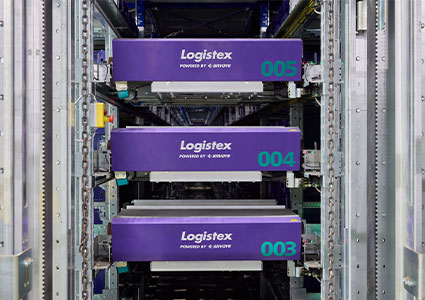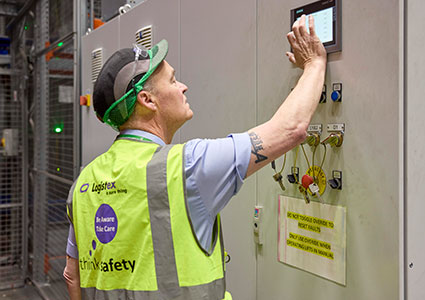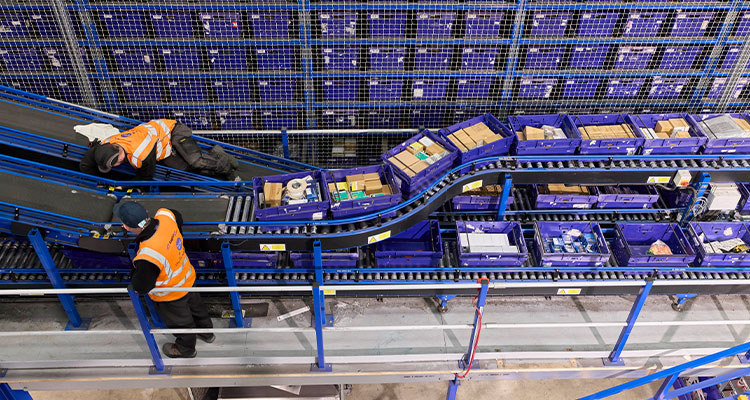Independent systems integrator, Logistex, is leading the way in warehouse automation
Warehouse automation champions, Logistex, provide automated materials handling and its renowned in-house designed and developed Reflex warehouse execution system (WES) solutions for warehousing operations. As an independent, employee-owned company with no manufacturing ties, Logistex integrates products from across the industry without bias.
With specific expertise in storage and retrieval, order forwarding, robotics, picking, and sortation systems, the business covers companies across a variety of sectors, including materials handling design and implementation, warehouse management, equipment refurbishment or maintenance, and facilities management.
 “Logistex is an independent systems integrator that aims to provide a complete end-to-end service for the entire lifecycle of an integrated automated warehousing solution, from initial consultancy to 24/7 on-site support,” opens Tony Gruber, Managing Director. “The business was established in 1937 as the Coventry and Leicester Electrical Company (CLECO). Around the turn of the century, it was acquired by the global engineering conglomerate, FKI, and became FKI Logistex. FKI was subsequently acquired by Melrose, who allowed the management team to perform a management buyout (MBO) in 2011, and it later become an employee-owned trust in 2018.
“Logistex is an independent systems integrator that aims to provide a complete end-to-end service for the entire lifecycle of an integrated automated warehousing solution, from initial consultancy to 24/7 on-site support,” opens Tony Gruber, Managing Director. “The business was established in 1937 as the Coventry and Leicester Electrical Company (CLECO). Around the turn of the century, it was acquired by the global engineering conglomerate, FKI, and became FKI Logistex. FKI was subsequently acquired by Melrose, who allowed the management team to perform a management buyout (MBO) in 2011, and it later become an employee-owned trust in 2018.
“As we no longer manufacture our own hardware, we’re able to create bespoke solutions by selecting the most appropriate materials handling equipment (MHE) based on the customer’s stock characteristics, order profiles, required throughputs, forecast growth models, available space and budget.
“The process begins at the concept stage with the customer’s data to create an appropriate design and operational description for the solution. Once approved, we move into the detailed design phase and write the functional design specific (FDS) for the Reflex software. At this stage, software design and development begin and in parallel, the automation is purchased, installed, and commissioned by our team. We then integrate the automation, which could be robots, pallet or tote shuttles, conveyors, or autonomous guided vehicles (AGVs).
“Our projects are managed via our stage gate process, which is overseen by the in-house project management team to ensure that the next stage cannot start until the previous stage has been completed to a high standard,” Tony explains. “However, the project doesn’t simply end there; we provide engineering support services once the project is live, either as a residential site contract where Logistex employees are based on the customers’ site or through field support for maintenance and breakdowns.”
Innovative collaboration
Turning to the benefits of automation, Tony explains: “From a productivity perspective, automation provides greater storage density, increased performance, better visibility, and enhanced reliability. It also enhances the role of warehouse operatives, as a traditional system requires pickers to push heavy trollies around static shelving. However, an automated goods-to-person system delivers required stock to the picker at a static, ergonomically designed picking station, making the process much less physically demanding.
“We’ve recently completed a project with a leading retail company’s vastly experienced and knowledgeable automation team, who have developed their ways of working over many years. It was a challenging task in terms of timescale, with the added complexity of it being our first implementation of the HAI Robotics solution. This was also the highest value project we’ve been awarded since the MBO, so we’re particularly proud to have successfully delivered the project for such a prestigious customer.”
With constant evolutions in the realm of technology, Logistex strives to stay ahead of the curve when it comes to innovation. “Our teams are constantly scouring the trade press and shows to look out for new technology,” Tony states. “Before adopting a new technology, our clients nearly always want to see a reference site where we’ve installed the same equipment. 
“Our recent project for John Lewis Partners is a great example of how we can introduce new technologies into our portfolio. As our first HAI Robotics installation, HAI provided a reference site visit to the closest robots they had in the UK, which, alongside our track record of integrating complex automation, gave John Lewis Partners the confidence to proceed with us.
“We approach client relationships with a ‘one team’ ethos, encompassing us as the integrator, our suppliers, and the end customer,” he continues. “Transparency and integrity are crucial attributes to ensure we create an environment in which trust and long-term relationships can develop. It goes without saying that communication is also key; when there are bumps in the road, we must be able to communicate with our customers and jointly agree on the best way forward.”
A tech-driven future
Tony shares both his short- and long-term vision for the business. “We have several ongoing projects nearing completion and one that has recently started, so the engineering team are constantly focused on completing projects to the high standards we’ve become known for,” he says. “We’re close to securing a very significant project and our sales team are focused on delivering the prospective pipeline for 2025 and beyond. We are currently recruiting to strengthen the team and ensure we have the resource capacity required to meet the order forecast.
“Further afield, our vision is to be the leading independent UK provider of secure, integrated, automated, and robotic warehouse solutions driven by AI,” Tony concludes. “To achieve that we’re investing in additional resources, as well as our Reflex software product. We’re starting to see the emergence of AI applications in our market and with further growth expected in coming years, we’re getting involved by exploring the potential of this revolutionary technology.”
